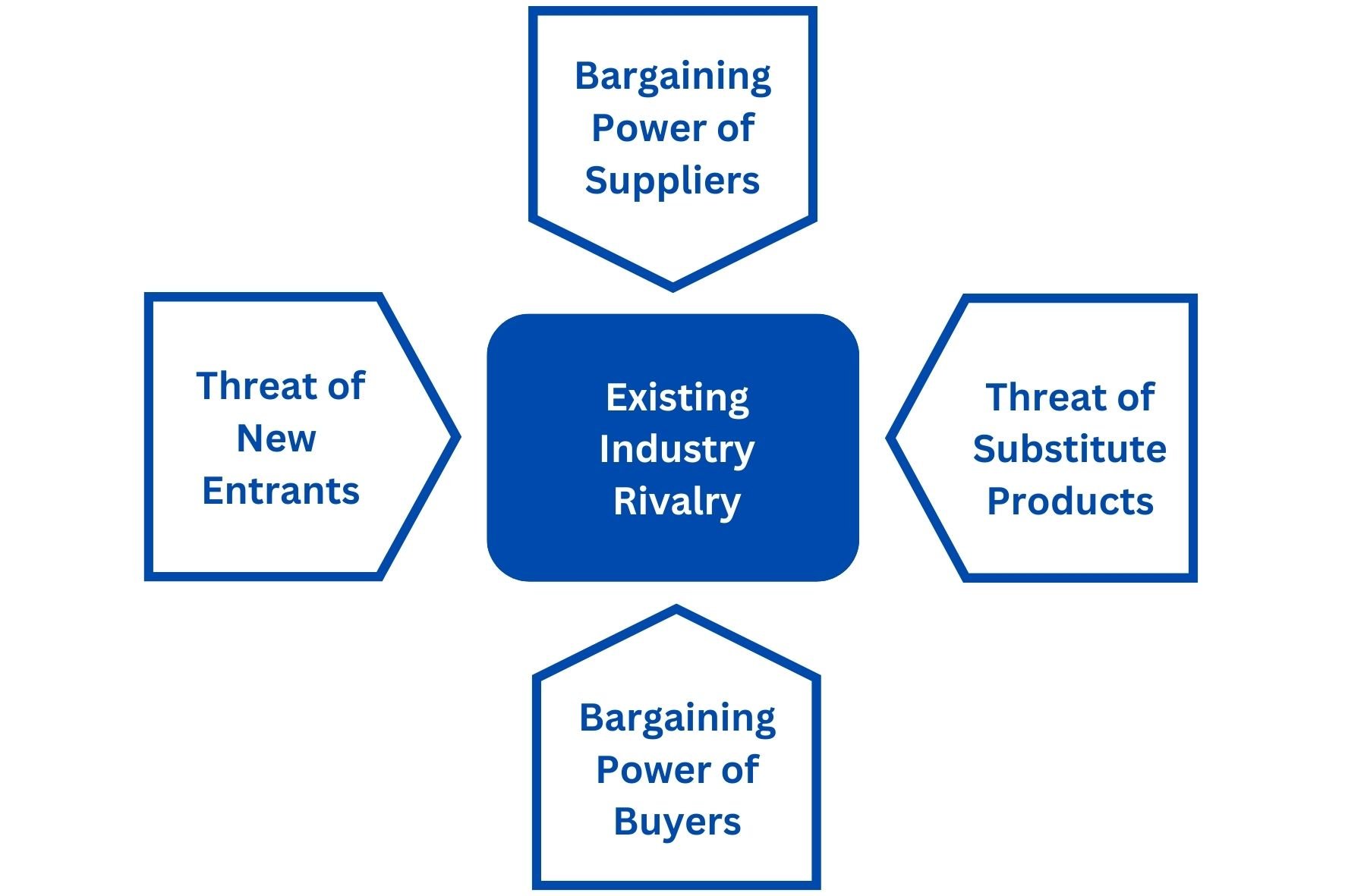B2 Porter’s Five Forces Model
Unit 7: Business Decision Making
Porter’s Five Forces is an analysis tool used to assess the level and threat of competition in a market. Businesses can use this tool to better understand their position and establish their competitive advantage. The five forces are
Competition in the industry
Threat of new entrants
Power of suppliers
Power of customers
Threat of substitutes
Existing Industry Rivalry
Existing industry rivalry refers to competitors already selling the same or similar goods and services. The number and capabilities of competitors impact whether a firm can compete on price or if they need to focus on non-price competition.
Firms need to establish where they are positioned in relation to their competition. Firms may analyse the industry to establish the market leader. Price leaders are the dominant firm in a market and have the power to set prices that the rest of the market are obliged to follow. Price leaders enjoy economies of scale, meaning their average unit costs are low. If a smaller firm was to attempt to compete on price, the price leader could drop their prices to a level that is unprofitable to smaller firms.
Threat of New Entrants
The threat of new entrants refers to the ease at which new firms can set up selling the same or similar goods and services. The easier it is for new firms to enter the market, the higher the risk of the market share of existing firms being depleted. This puts pressure on firms to undertake competitive behaviours such as reducing prices and improving product quality.
Industries with high barriers to entry have lower threats of new entrants. Barriers to entry reduce the threat of new entrants to a market. These include high set-up costs, economies of scale, strong brand image and government regulation.
Bargaining Power of Suppliers
Each industry has a range of suppliers that provide goods and services to other producers in the supply chain. The power of each supplier depends on the number of suppliers selling each product, how unique their products are and how easily firms can switch between different suppliers.
In industries where there are many suppliers, their bargaining power is low as firms can switch to another supplier. Where a good or service is unique, the bargaining power of suppliers is high as firms would find difficulty in finding another supplier that meets their needs. Where it is difficult for firms to switch between suppliers, for example, if suppliers have them tied into a contract, their bargaining power is high.
Bargaining Power of Customers
Customers will seek to reduce the price they pay for their goods and services. Where the bargaining power of customers is high, firms can be pressured to lower prices and improve quality to maintain their customer base. The power of customers depends on the number of customers in comparison to suppliers, the proportion of a firm’s sales distributed to each customer and how easily it would be for firms to find a new client base.
In industries where there is a high number of customers compared to suppliers, their bargaining power is low as firms can sell to other customers. Customers who represent a large proportion of a firm’s sales have a high bargaining power as firms aim to maintain large contracts. In industries where it is easy to find a new client base, bargaining power is low.
An example of customers with high bargaining power includes airlines ordering in-flight food. Due to the large number of orders made by individual airlines, airline food suppliers will seek to keep customers. Individual customers at McDonalds have less power as the impact of one customer switching to another firm is minimal.
Threat of Substitutes
Substitute products are those from a different industry that can meet the same customer needs as the industry products. This creates an opportunity for a customer to switch products and reduce industry profitability. Firms which have products with few close substitutes enjoy the power to keep prices high.
Examples of substitutes include public transport instead of car purchase and plant-based meat alternatives.





